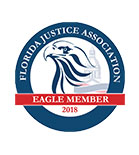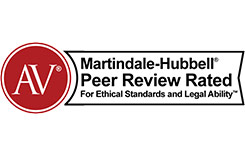New Florida Automobile No Fault Law Is An Insurance Company Scam
Is Florida a No-fault State?
Yes. Florida was the second state in the U.S. to adopt a no fault automobile insurance law in 1971. The new law took effect January 1, 1971, and the idea was to create a compromise between the rising number of automobile accident victims and automobile insurers. The “deal” was designed to decrease rising automobile liability insurance premiums.
What was the “deal”? As usual, the deal was to limit YOUR rights. The “deal” was YOU could no longer sue the “at fault” driver for pain and suffering” in Florida courts of law. YOU also were COMPELLED to forever purchase a new insurance product from the insurers, the No Fault or PIP policy. PIP stood for “personal injury protection” benefits. The theory went like this. This PIP coverage provided $10,000 in “personal injury protection” benefits that were to be immediately and easily available to you if you were in an automobile accident to cover your hospital, medical and chiropractic bills, no matter how serious or minor your injuries might be. BUT, you could never sue for “pain and suffering” or future damages unless you could prove that your injury was “permanent within a reasonable degree of medical probability.” With that began an insurance company induced explosion of automobile insurance litigation. The litigation centered around both the lawsuits filed against the “at fault” driver and his insurer, over whether the injuries were permanent, and the lawsuits against YOUR own PIP insurer, over whether your treatment was reasonable and necessary. The lawsuits over those issues have been waged by YOU over the last 40 years because the insurance companies made it necessary with their over-reaching laws. All of this began after YOUR legislators eliminated your rights to sue the responsible driver and their insurer for your injuries back in 1971.
Now, the insurers have assembled allies in the Florida Capitol again and they can have their cake and eat it, too. YOU still have to prove a permanent injury if you bring a lawsuit against the “at fault” driver, but YOUR PIP insurer is NOT responsible for the same PIP benefits originally provided as the “trade-off” 40 years ago. In fact, in a large number of cases, they may be responsible for $2,500 or less.
The new PIP law headed to the governor:
- Gives you 14 days to seek statutorily defined emergency medical treatment after being injured in an automobile accident, and if you don’t, your PIP benefits are reduced to $2,500 at the most;
- Provides the original $ 10,000 in PIP coverage only if you are “seriously” injured and seek certain statutorily defined emergency medical care at certain types of licensed health care facilities in the first 14 days;
- Limits you to $ 2,500 in PIP coverage if you have moderate or “soft tissue” injuries where you didn’t get certain statutorily defined emergency medical care at certain types of facilities during the first 14 days after your accident.
- Eliminates coverage for acupuncturists or massage therapists;
As you might imagine, what the insurance companies and the Governor consider a “moderate” or “soft tissue” injury or “emergency medical treatment” will be quite different from what you and your doctors think. In addition, despite the well known increases in health care costs for all illnesses and injuries over the last 40 years, your benefits under this new law will be only 25% of what they were in 1971 unless your injuries are “serious” as defined under this new law and you seek certain defined types of “emergency medical treatment” in the first two weeks after the accident.
An example of a very common scenario is in order here. Let’s say you are in an automobile accident in 2013 when this law takes effect. The Florida Highway Patrol arrives, cites the other driver, and people at the scene offer to call an ambulance because you are a little shaken. You decline an ambulance and emergency care, thinking all will be well. After all, you’re not bleeding. You awaken the next day and you’re stiff, sore and in pain all up and down your back. You put off any real medical care because you figure you’ll get over it. After all, you’re just bruised up. You don’t want to be “one of those people” who rush to the doctor or hospital to the rolling suspicious eyes of the nurses and doctors when you mention you were in an automobile accident yesterday. Over the next couple of weeks, the pain doesn’t get better and, in fact, you develop burning pain radiating down your right arm. Fifteen days later, after the 14 day deadline in the new law, you finally can’t take the pain anymore. You go to your primary care doctor who prescribes some anti-inflammatory medications that don’t work for the next thirty days. He finally refers you to an orthopedic surgeon who treats you with physical therapy for another 60 days to no avail. Finally, you are sent for an MRI about four months after the accident when your radiating pain down your right arm has become excruciating. The MRI shows a herniated disc in your neck, and it is pressing on the nerve roots leading to your right arm. The orthopedist tells you it will only get worse unless you have surgery where he cuts open your neck and fuses your vertebrae after removing the ruptured disc. You undergo the potentially life threatening surgery which alleviates your arm pain, but you have a stiff neck and neck pain for the rest of your life. Through all this, you have incurred bills totaling over $ 100,000.
Under that scenario, YOUR PIP insurance is responsible for only $2,500 at most toward your medical expenses. You still have to prove a “permanent injury” under the old 1971 law which had promised you $10,000 in PIP coverage in exchange giving up for your right to sue the “at fault” driver and his insurer for pain and suffering in an amount determined by YOUR peers, a jury.
Is this what YOU envisioned when you allowed your legislators to trade away your rights in 1971? Of course not. But like the proverbial frog in the boiler pot, you got comfortable as the water warmed, fell asleep and were boiled alive before you knew what was going on. In 1971, the Florida Legislature was strong-armed by the insurance industry to enact the No Fault law as a substitute for a jury’s decision on your pain and suffering damages in automobile injury lawsuits. That is the problem with so-called “insurance reform” or “tort reform”. It’s touted to be in your best interest, but it is not. In fact, it is the opposite. Remember this, just about anytime insurance companies want to substitute a law they crafted for decisions by juries of your peers, you can bet they aren’t trying to do you a favor in the process.

 (407) 712-7300
(407) 712-7300





























